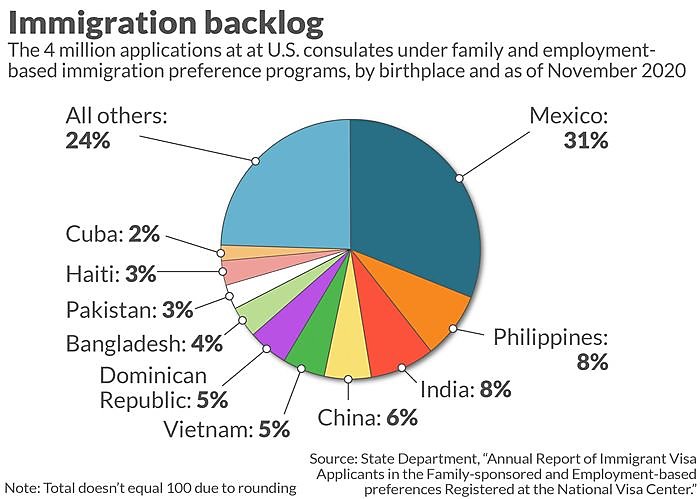The processing delays are the fault of outdated bureaucratic systems—such as a paper-only filing system and a ban on web-based interviewing—as well as incomprehensible pandemic protocols keeping most U.S. consulates at reduced capacity.
But the bigger issue is that Congress has capped the number of family and employer-sponsored immigrants at very low levels, which were last updated more than three decades ago in 1990. These caps for family–and employer-sponsored immigrants are just 366,000 for an entire year. There were more than 30 times as many job openings in a single month in 2021 alone.
This 30-year pause on cap increases makes no sense. The U.S. economy has more than doubled since 1990, and the country has added about 35 million more households. The family and employment-based immigration limits should have at least adjusted to keep up, but they haven’t, and because of the administrative delays, the government is actually wasting tens of thousands of the few cap slots this year too.
The solution is simple: Congress should eliminate arbitrary caps on qualified legal immigrants during times when the labor market clearly needs workers. It should require the executive branch to adopt streamlined procedures for processing these applications and ensure that the workers can make it into the country in time to meet employers’ needs.
The stakes are high. Every week that these jobs remain open is costing the U.S. economy, consumers, and businesses tens of billions of dollars in lost productivity. Prices continue to rise, and families are suffering. In some sectors—like healthcare—the shortage is literally a matter of life and death. One estimate found that alleviating the shortage would save thousands of lives per year.
Indeed, the 9 million backlogged immigrants mainly just need the government to create cap space, so that they can acquire their green cards, get jobs and contribute to the economy. Since the government can create more cap space with one or two lines in a bill, it can easily solve the backlog and let immigrants into the country.

